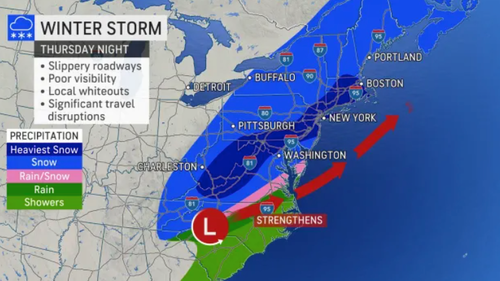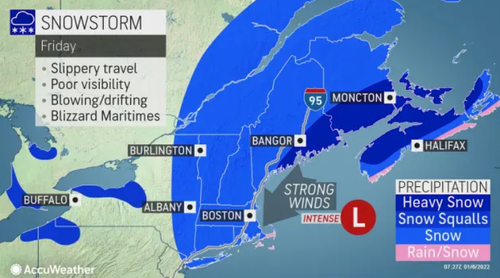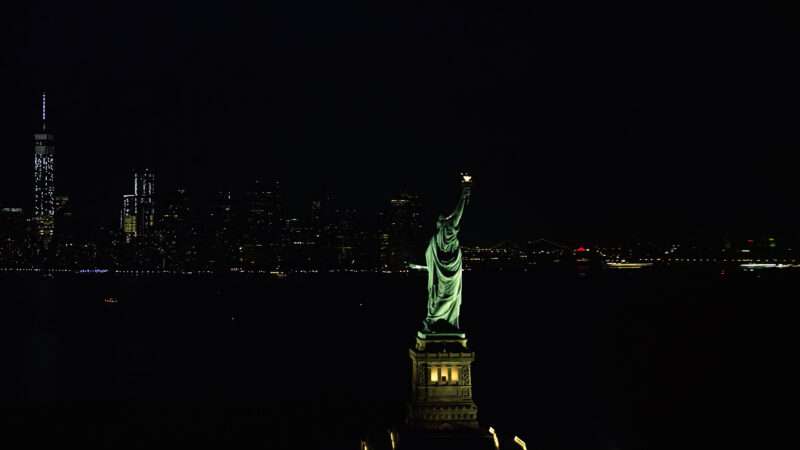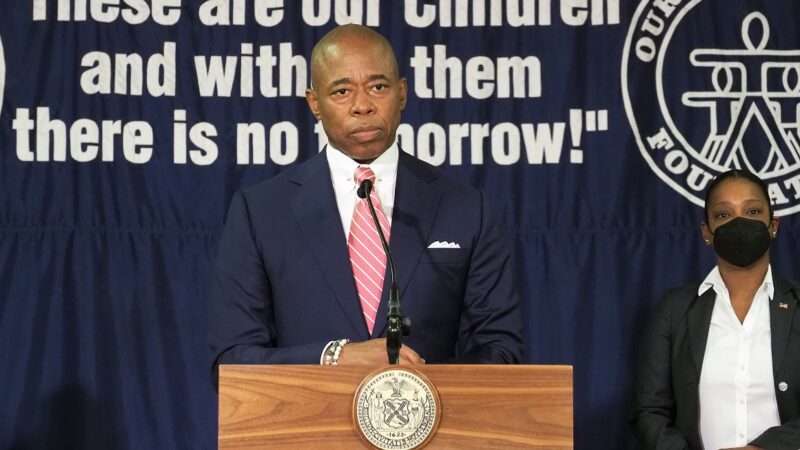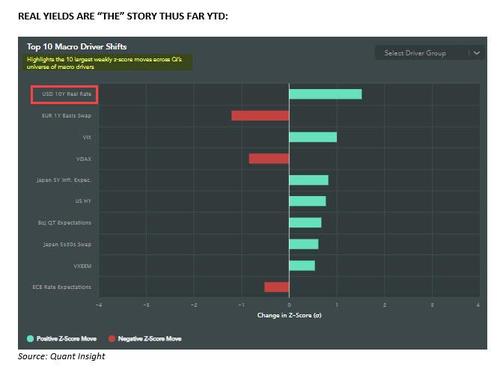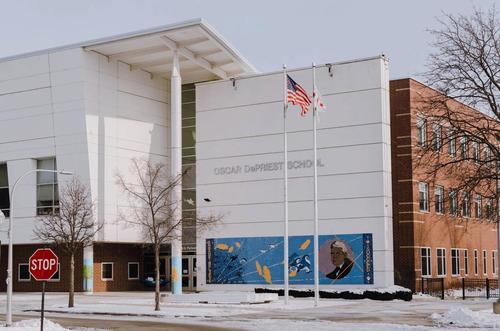It’s hard enough on a normal day to avoid the phrase “January 6” when watching CNN or listening to NPR for more than about 30 seconds, but now that we’ve reached the one-year anniversary of that harrowing riot at the Capitol, the media air is thick to the point of suffocation with claims that the nation “now teeters on the brink of a widening abyss,” driven there by a major political party whose “unofficial litmus test” is believing falsely that the 2020 presidential election was stolen.
So perhaps amid the daylong doomsaying for democracy, it’s worth pausing on three less-ballyhooed news headlines from January 5: “GOP officials in Arizona’s largest county affirm 2020 election was secure in rebuttal to Trump claims” (The Washington Post), “Senate Republicans open door to revising obscure 1887 law to protect elections” (NBC News), and (from The Union Journal), “Liz Cheney Says Donald Trump Unfit For Holding Any Future Office.”
Reading the hundreds and thousands of recently published words about how “American democracy is more threatened than at any point in our lifetimes” (as posited by The Washington Post‘s Paul Waldman), it can be hard to square such evidence of Republican deviation from the “big lie” with the media’s workaday portrayal of a unified GOP hellbent on doing the authoritarian bidding of former President Donald Trump.
“With Trump loyalists ascendant, no room is left for dissent in a party now fully devoted to twisting the electoral system for the former president,” Barton Gellman wrote in a much-praised, 13,500-word cover story for The Atlantic titled “Trump’s Next Coup Has Already Begun.” Elected Republicans, Gellman asserted, have over the past year given the former president a “near-unanimous embrace,” with Trump compelling “the whole party’s genuflection to the Big Lie.”
Gellman is not a journalistic outlier in hyperbolically maximizing the GOP’s obedience to the 45th president. The Washington Post yesterday, in an article headlined “How Republicans became the party of Trump’s election lie after Jan. 6,” included this odd formulation: “Of the 32 candidates identified so far by the [GOP] ‘Young Guns’ program as having promise in the 2022 cycle, at least 12 have embraced the new Republican orthodoxy that fraud tainted the 2020 election.” One would normally expect an “orthodoxy” to clock a higher percentage than George McGovern in 1972.
You would think that the facts of Republican capitulations to Trump and his conspiracy-believing fans—beginning with the 139 House members and eight senators who one year ago today shamefully voted against certifying a free and fair presidential election—would be journalistically sufficient. As would acknowledging the existence of the 42 GOP senators and 67 House members who did not vote Trump’s way, in addition to legions of state and local Republican election officials who acted with integrity, and the dozens of Republican-appointed judges who swatted down the lame-duck president’s Mickey Mouse election-challenging lawsuits.
But that is an increasingly naive understanding of how prestigious news organizations view their own role in this era of heightened “moral clarity” and eternally imperiled democracy. As Washington Post media columnist Margaret Sullivan implored her colleagues earlier this week, “If American democracy is going to survive,” then media outlets need to make “democracy-under-siege a central focus of the work they present to the public,” and then “shout it from the rooftops. Before it’s too late.” No more of that equivocating, both-sides stuff; go straight to the democracy siren.
But what happens when journalism drops even the pretense of trying to understand opposing points of view? One important and inevitable development, one that is guaranteed to affect political coverage in this midterm year, is that most nuance about competing factionalism within the GOP will be collapsed into a Trump monolith, the better to be dismissed and opposed en bloc.
One of the sufficiently alarmist pieces that Sullivan hailed was a New York Times New Year’s editorial with the five-alarm headline (or was it editorial threat?) of “Every Day Is Jan. 6 Now.” In it, the newspaper of record gives all good citizens our marching orders: Vote Democrat, or else:
The Republic faces an existential threat from a movement that is openly contemptuous of democracy and has shown that it is willing to use violence to achieve its ends. No self-governing society can survive such a threat by denying that it exists….
In the months and years to come, Americans of all stripes who value their self-government must mobilize at every level — not simply once every four years but today and tomorrow and the next day — to win elections and help protect the basic functions of democracy.
This rather startling decree alas did not go far enough for another commentator approvingly cited by Sullivan, Georgetown visiting professor Thomas Zimmer, who complained that the Times “is often complicit in obscuring the anti-democratic radicalization of the Republican Party and the acute threat to American democracy emanating from the Right,” evidence for which includes “regularly providing a platform to people whose sole purpose is to uphold traditional hierarchies, launder rightwing talking points, and legitimize the reactionary counter-mobilization against multiracial pluralism.” (By which Zimmer meant anti-Trump conservative Bret Stephens.)
If every day is January 6, and every Republican a Trumpite (dedicated to, in Zimmer’s words, the “underlying political project of entrenching white Christian patriarchal dominance by establishing one-party-rule systems”), then we know what to do: Oppose every Republican, everywhere, in every election, regardless of whether it has anything to do with Trump or the “big lie.”
“Because 2022 is the first midterm of a presidential term and so the opposition party is likely to win a major victory anyway, the outcome may not be greeted with an explosion of violence,” Waldman wrote, trying to sound (in his words) optimistic. “On the other hand, that victory will enable ‘respectable’ portions of the GOP to proceed in their effort to make fair elections a memory, as they take control of more and more of the apparatus of voting to ensure that Republicans can never lose.”
Tabling for a moment those attempts to change voting laws and election officials—which are real, ongoing, and disturbing—think of the practical import of Waldman’s words, on both politics and journalism. It will become a moral imperative for certain journalists and news organizations to label nearly every Republican candidate who is not explicitly anti-Trump as at least a quiescent participant in the Trump-led destruction of democracy, and portray their election as being a referendum on that issue, regardless of its salience in a given campaign.
This is a recipe for ineffective politics and godawful journalism, as even a cursory glance at the November Virginia gubernatorial race should remind us. Democratic favorite Terry McAuliffe tried desperately to call Republican Glenn Youngkin a Trump “surrogate” and “racist,” and too many in the media were eager to believe that a state which voted Democrat the past four presidential elections was suddenly undergoing a spasm of “white backlash.” Turns out voters were more motivated by education policy than whatever national political journalists imagined was dying in darkness.
If you drill down into the democracy-in-peril beat, and successfully make it past overheated nonsenses such as Gellman’s 1,866-word section probing how Trump might be “just like [Slobodan] Milošević,” you get to four concretely worrying (at least to me) trends:
1) Trump, despite his wretched actions a year ago and characteristic lying since, is still by far the most popular and important figure in GOP politics. 2) Partly because of the former president’s ongoing insistence that 2+2=5, a majority of Republicans believe the fiction that President Joe Biden’s victory was illegitimate, which incentivizes GOP politicians to act on that fantasy. 3) Republicans are attempting to (sometimes successfully) change election laws in such a way to make results more vulnerable to political pressure. And 4) Trump is trying to get his people installed in key election-tabulating positions on the state level. These are not good trends!
And yet it’s awfully hard to sort through and trust even the in-depth news coverage of these developments. For instance, take this (Sullivan-praised) Associated Press article, “‘Slow-motion insurrection’: How GOP seizes election power.” “Republicans are taking hold of the once-overlooked machinery of elections,” we learn, with activity (changing personnel, conducting audits) in the battleground states of Michigan, Wisconsin, and Pennsylvania. “This time, experts argue, is different: Never in the country’s modern history has a major party sought to turn the administration of elections into an explicitly partisan act.”
I am an eager audience for such scaremongering, alarmed as I was by the way the then-president abused the machinery of the Republican National Committee to gratuitously cancel state presidential primaries in 2020. Yet I also crave a sense of context and proportion, so I can calibrate the outrage accordingly. Is this stuff really unprecedented?
Er, no.
“In anticipation of a photo-finish presidential election,” Politico reported in November 2008, without a single democracy-in-peril siren, “Democrats have built an administrative firewall designed to protect their electoral interests in five of the most important battleground states. The bulwark consists of control of secretary of state offices in five key states—Iowa, Minnesota, Nevada, New Mexico and Ohio—where the difference between victory and defeat in the 2004 presidential election was no more than 120,000 votes in any one of them.”
Since I can already hear the accusations of bothsidesism hurtling toward my ears, here’s a quick pre-buttal: I don’t know if the “Secretary of State Project,” as this George Soros–funded (no, really!) initiative was called, was directly comparable in scope and potential nefariousness to what the Trumpies are doing now. But I do know that I prefer knowing it was a thing than simply swallowing the journalistic onesideism whole.
By omitting helpful and complicating context, maximizing scary adjectives, and browbeating Democrats to do more (“they have so far failed to confront the urgency of this moment—unwilling or unable to take action to protect elections from subversion and sabotage,” the Times editorial board complained), news organizations are contributing to the suspicion that they are not honest brokers in these very real and problematic warring interpretations of events.
Margaret Sullivan, for example, takes as axiomatic that former Georgia Democratic gubernatorial candidate and voting rights activist Stacey Abrams is a “hero,” even though Abrams never conceded defeat in her controversial 2018 election, and has spread misinformation about voting laws in Georgia. Paeans to universal democratic values are considerably more convincing when applied universally.
Lopsided media hyperbole about the erosion of democracy is not remotely the most important story about January 6; far from it. America is beset by ongoing problems of populism, political violence, and whackaloonery, and it’s an ongoing disgrace that a significant chunk of a major political party still indulges in the pathologies that contributed to last year’s traumatic riot and disrupted the transfer of power.
But the road back from that insanity is not going to be built best by erasing the existence of non-Trumpy Republicans and treating every boring political interaction as a life-or-death struggle for the republic itself. Two-party systems produce partisan pendulum swings; that’s what they do. Will the country, and its news media, be able to cope?
The post The Strategic yet Self-Defeating Hyperbole of 'Democracy in Peril' Journalism appeared first on Reason.com.
from Latest – Reason.com https://ift.tt/3eVaqxV
via IFTTT


